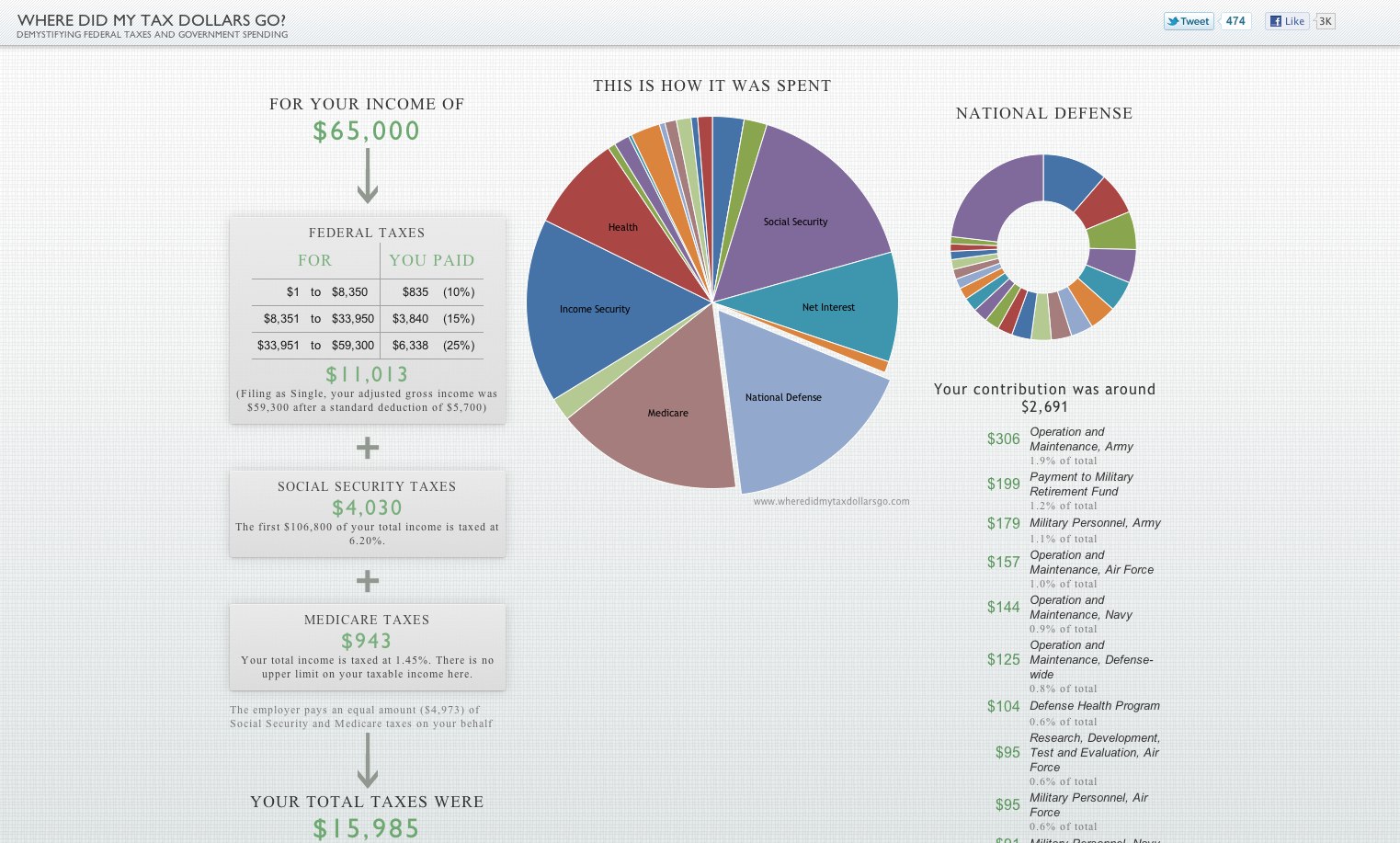Taxday Treat: A Google-eye view of government spending

It’s ironic that all of this fighting in Washington over taxes and spending would come at a time when Americans are getting ready to go through their annual ritual of handing over a check to the U.S. Treasury.
Keeping politics out of this post, it’s probably safe to say that, when it comes to government spending, most American really don’t know how their tax dollars are divided. But Google, doing its thing to stir the pot on this tax day, today named the winner of the Data Viz Challenge, a developer's competition launched in February withEyebeam and Whatwepayfor.com. The challenge? Visualize how federal income tax dollars are spent.
In a blog post, the company said it received “more than 40 thought-provoking entries that each take a unique approach to making this data more accessible to taxpayers.” I went over to Anil Kandangath's winning entry, titled "Where Did My Tax Dollars Go?" and entered my own information. (A sample image - for a single person earning $50,000 - is to the right.)
While it was no big shocker that National Defense, Medicare and Social Security had the biggest pieces of the pie, I was surprised to see that a mere 3 percent goes to Education - and that was part of a category that included “Training, Employment and Social Services.”
Personally, I would like to see Education with its own piece of pie - and a bigger piece. But that's a different post for a different blog. As I started to dig deeper, I discovered that National Defense doesn’t include “Veterans Benefits and Services,” a piece of pie that also only receives 3 percent of my tax dollars.
Suddenly, I’m informed... Imagine that. On Tax Day, no less.
As always, Google has put together a YouTube video to go with its news. This clip fast forwards through some of the other entries to give you an idea of what developers were able to do. Check it out below.
